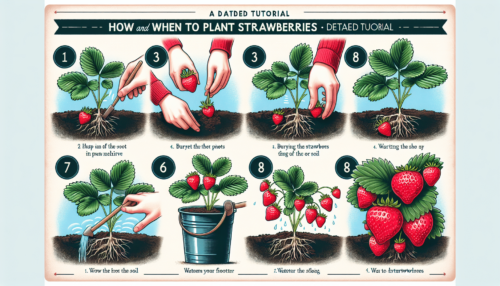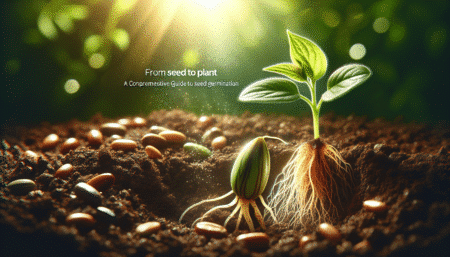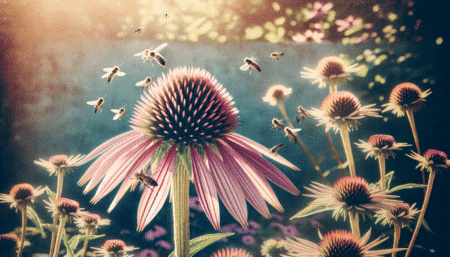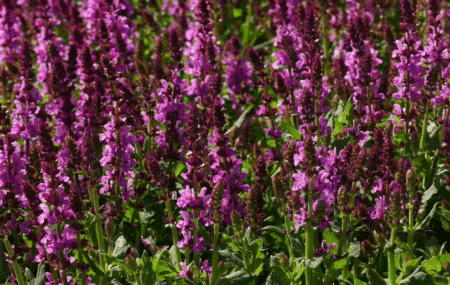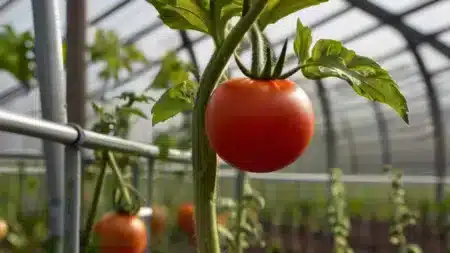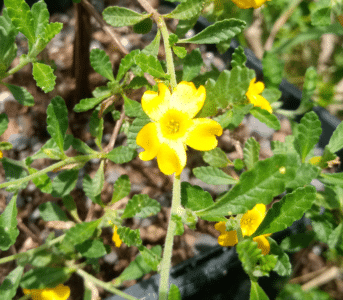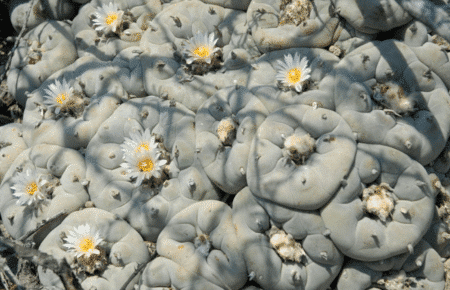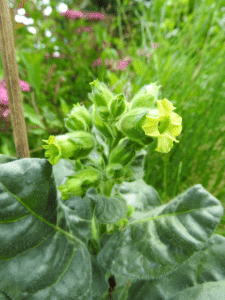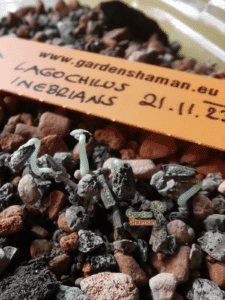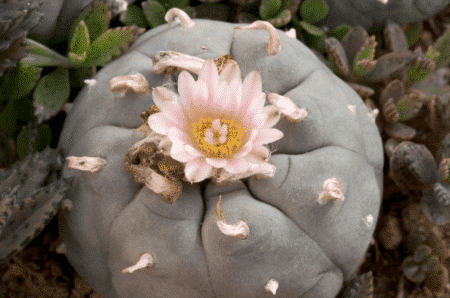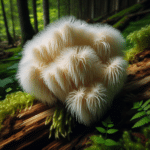- The best time and variety selection for planting strawberries
- The wild strawberry (Fragaria vesca)
- The musk strawberry (Fragaria moschata)
- The monthly strawberry (Fragaria vesca var. semperflorens) - Preparation of the site and soil
- Step-by-step instructions for planting strawberries
- Care and maintenance of strawberry plants
- Harvesting and storing strawberries successfully
You can find our different strawberry varieties here!
Strawberries are one of the most popular garden fruits and can be grown in a variety of garden types, from nut and ornamental gardens to indoors and on balconies and patios [2][1]. With over 20 species and countless varieties developed through breeding, strawberries offer a fascinating variety for snack lovers and garden enthusiasts alike [2]. As perennial plants that develop their fruits and flowers along long, fleshy stems on the ground, they belong to the Rosaceae family, which also includes apples, cherries and quinces [3]. The origins of our garden strawberries lie in North America, where the crossing of the native scarlet strawberry (Fragaria virginiana) with the Chilean strawberry (Fragaria chiloensis) led to the creation of the pineapple strawberry (Fragaria x ananassa), the ancestor of today's garden strawberries [3].
To successfully grow strawberries in your garden and enjoy a bountiful harvest, it's important to know when to plant strawberries and choose the right variety for your location. In this article, you'll learn all about the best time to plant strawberries, how to prepare the ideal location and proper strawberry plant spacing, which strawberries make good neighbors in the garden, and how to care for and harvest everbearing strawberries for an extended strawberry season [3].
1. the best time and variety selection for planting strawberries
The best time to plant strawberries varies depending on the variety and the desired harvest time. Here is a brief overview to help you determine the ideal planting time for your strawberries:
- Single-bearing strawberriesThese varieties are best planted from mid-July to mid-August [5]. Recommended varieties for single-bearing strawberries are 'Elvira', 'Mieze Schindler' and 'Praline' [7].
- Double-bearing strawberries: The ideal planting period for these varieties is between the beginning and middle of August [5].
- Everbearing strawberriesThese can be planted throughout the season, but for best results it is recommended to plant them after the Ice Saints in spring [5]. Recommended varieties for everbearing strawberries include 'Diamante' and 'Klettertoni', which provide a continuous supply from the end of June to the end of October [7].
Strawberries have a two-year life cycle, with the first year dedicated to vegetative growth and the second year to fruiting [3]. After planting in the recommended period, the first fruits can be harvested the following year [2].
Month strawberries (Fragaria vesca var. semperflorens), a variety of wild strawberries (Fragaria vesca), flower from May to October and bear fruit continuously [3]. This variety is ideal for a long harvest period and provides fresh strawberries for several months.
Choosing the right time and the right varieties is crucial for a successful strawberry harvest. Take this information into account when planning your strawberry patch so that you can enjoy delicious, fresh strawberries all year round.
- The wild strawberry (Fragaria vesca)
The Wild strawberryFragaria vesca, botanically known as Fragaria vesca, is a plant that is prized in many gardens for its aromatic flavor and variety of uses. Here is some important information to keep in mind if you want to grow this particular strawberry variety in your garden:
- Botanical and location information:
- Plant growth and flowering time:
- Growth: Wintergreen, perennial herbaceous plant that grows up to 25 cm high [8].
- Flowering time: Carries white, five-petaled flowers from April to June [8].
- Fruiting: The fruits ripen in June and are small, aromatic and wild, with an intense strawberry aroma and a deep red color, covered with fine hairs [10].
- Care and harvest
- Planting instructions: Prefers a sunny to semi-shady location, requires well-drained soil that can be enriched with compost or organic fertilizer. Planting distance: 30-40 cm. Suitable for planting in the ground or in pots [10].
- Harvest: The fruits can be harvested when they are completely red and should be stored in a cool, dry place [8].
- Special features: The plant is very hardy and requires no special winter protection. It is ideal for balcony plants [9].
This information provides a solid foundation for successfully growing wild strawberries in your garden. Consider these details to harvest delicious, flavorful fruit from May through June while promoting a bee-friendly environment [9][12].
- The musk strawberry (Fragaria moschata)
The Musk-strawberryalso known as cinnamon strawberry or Bisamer strawberry, is a special species within the Rosaceae family and is characterized by its unique properties [13].
- General information:
- Botanical name: Fragaria moschata [13].
- Growth: Winter green, perennial, herbaceous, with a height of up to 40 cm [13].
- Habitat: Prefers damp, sheltered locations such as forest edges and damp bushes [13].
- Flowering and fruiting: Flowers from May to June, with fruits that ripen in summer. The flowers are radially symmetrical with five petals and the fruits are so-called pseudo-fruits [13].
- Special features:
- Differentiation: Can be distinguished from the wild strawberry by the orientation of the hairs on the flower stalk, which are directed away from the flower in the musk strawberry [13].
- Aroma: Characterized by a sweet and aromatic taste profile, similar to the musky aroma of certain grape varieties. The aroma is made up of around 130 chemical components, including various esters and alcohols [13].
- Cultivation: Once widespread in Germany, but today replaced by the garden strawberry due to higher cultivation effort and smaller fruits [13].
- Cultivation and care:
- Site selection: Sunny to semi-shady with moist, well-drained soil [14].
- Planting recommendation: About 10-12 plants per square meter for optimal coverage [14].
- Winter hardiness: Hardy down to -10°C and self-fertile, does not require cross-pollination [14].
- Benefits: Ideal for bee-friendly gardens and direct consumption or processing into jams and desserts [15].
This information provides a valuable basis for growing musk strawberries in your garden. With its unique flavor and aromatic profile, it is a delightful addition to snack gardens and lovers of special strawberry varieties [13] [14] [15].
- The monthly strawberry (Fragaria vesca var. semperflorens)
The Monthly strawberryalso known by various names such as Forest Strawberry or Fraise des Bois, offers an attractive addition to any garden or balcony. Here is some important information to bear in mind when growing this variety:
- Location and soil conditions:
- Special features and care:
- GrowthThe plant reaches a height of 10-20 cm and, unlike many other strawberry varieties, does not form runners, making it ideal for planting in pots and window boxes [17].
- Fruit time: bears fruit from June until late September, which allows for a long harvest period [17].
- Winter hardinessAs a prostrate perennial, the month strawberry is hardy and can be easily propagated by runners due to its ability to spread [18].
- Versatility and application:
- Garden stylesSuitable for various garden styles, including natural garden and cottage garden [18].
- UseMonth strawberries are not only an ornamental for the garden, but also attract a wide variety of insects and thus serve as a source of pollen. The fruit can be eaten fresh or used to make jams and sweet dishes [18][20].
For those interested in growing the monthly strawberry, our online store at www.gardenshaman.eu a selection of seeds, including the variety and 'Alexandria'. This variety is known for its small, aromatic fruits and its suitability as a bee pasture, ground cover or for fresh consumption. [19][20].
2. preparation of the site and soil
To ensure optimal site and soil preparation for planting strawberries, follow these steps:
- Soil cultivation:
- Soil quality:
- The soil should be loose, not too heavy, deep, rich in humus and have a pH value between 5.5 and 6.5 (slightly acidic to acidic) [21][5][2][6].
- Avoid using conventional garden compost as it is too salty and chalky for strawberries [21].
- The soil should be well-drained to avoid fungal diseases. Drip irrigation is recommended to avoid unnecessary contact of the strawberries with water [22].
- Site selection and crop rotation:
- Strawberries thrive best in full sun, but should be slightly sheltered from the wind [21][2][3].
- Choose a location that has not hosted strawberries for at least four years to avoid diseases [6].
- Avoid planting strawberries after potatoes, beans or peas as there is a risk of Verticillium wilt [6].
- A cyclical change of location every 4 to 5 years prevents soil fatigue and emerging fungal infestation [22].
3. step-by-step instructions for planting strawberries
To plant strawberries successfully, follow these step-by-step instructions:
- Preparing the planting holes:
- Planting strawberry plants:
- Carefully remove the strawberry plants from their containers [4].
- Place each plant in the center of the planting hole, keeping the heart of the plant above the soil surface [21].
- Fill the hole with soil and press it down gently [4].
- Water each plant thoroughly with a watering can filled with rainwater [4].
- Care after planting:
For planting in containers:
- Use a pot with a diameter of around 12-15 cm and a height of at least 15 cm for strawberries in pots [5].
- Strawberries can be planted in a variety of containers, including pots, window boxes and raised beds [24].
- In a window box, rows should be about 25 cm apart and 15 cm from the ground to allow for root growth [24].
For vertical gardening:
- Plant strawberries in several layers of flower boxes attached to a wall to save space and create a decorative effect [24].
4. care and maintenance of strawberry plants
The following steps must be observed for successful care and maintenance of strawberry plants:
- Weed control and irrigation:
- Protection and fertilization:
- Before harvesting, place straw, fir branches or a plastic sheet under the young fruit stalks to keep the fruit dry and clean and reduce the risk of fruit rot [4].
- After harvesting, new runners and leaves should be removed, leaving the heart of the plant intact to encourage the formation of new flower buds for the following year [5].
- Fertilizing after the harvest and in spring, after the plants have sprouted, supports plant health and promotes fruit formation. Use organic fertilizer or special berry fertilizer that is rich in potassium [24] [2].
- Preparing for winter and preventing illness:
- Protect strawberries from frost in winter by covering them with fleece or a thick layer of mulch [5].
- To overwinter strawberries, cut back all runners, place them on a protective base and cover them with straw or reeds [24].
- Natural plant protection methods, such as diluted horsetail broth, can be used to prevent fungal diseases. Mulching with straw helps to prevent excessive moisture on the fruit and reduce the risk of fungal infections [1].
5. successfully harvesting and storing strawberries
To harvest and store your strawberries successfully, follow these guidelines:
Harvesting:
- Optimal harvest timeBest harvested early in the morning when the fruit is still cool [1].
- Maturity level: Make sure that the strawberries have a uniform red color and are firm but tender to the touch [1]. They should be fully ripe, as strawberries do not continue to ripen after picking [26].
Store:
- PreparationRemove damaged or moldy strawberries before storing. Store the strawberries in a single layer to avoid crushing [26].
- Cold storage:
- Do not wash before storage: Strawberries should not be washed before storage, as this can lead to faster spoilage [26].
Preserve:
- Freeze:
- Use after defrostingIdeal for smoothies, sauces or jams, as they can become mushy after defrosting [27].
For those interested in growing strawberries, our online store on www.gardenshaman.eu a selection of different strawberry seeds.
Further questions and answers about planting strawberries
How should strawberry plants be planted and at what time?
Strawberry plants should be planted between the end of April and mid-June. To extend the harvest period, you can stagger the planting times, but this is only effective in the first year if the plants remain in the bed. Make sure that the planting holes are deep enough for the long, strong roots of the frost plants.
What should I bear in mind when growing strawberries?
The answer to this question has not been provided. In general, however, care should be taken to ensure that strawberries receive sufficient sunlight, water and nutrients and are planted at a suitable distance from each other.
How do you set up a strawberry bed properly?
Before planting the strawberries, the strawberry bed should be thoroughly loosened and enriched with compost or organic fertilizer. The planting depth should correspond to the previous height of the strawberries. A planting distance of around 30 cm from other strawberry plants is recommended. Strawberries need a lot of water in hot weather.
How is the soil optimally prepared for strawberry cultivation?
The soil should be prepared at least 4 weeks before planting. The soil should be dug up and mixed with well-deposited horse manure or compost to improve the strawberries' nutrient supply.
Youtube
References
[1] – https://www.mein-schoener-garten.de/gartenpraxis/nutzgaerten/erdbeeren-pflege-pflanzen-duengen-und-schneiden-20531
[2] – https://www.ndr.de/ratgeber/garten/nutzpflanzen/Erdbeeren-pflanzen-pflegen-und-vermehren,erdbeeren209.html
[3] – https://www.mein-schoener-garten.de/pflanzen/obst/erdbeeren
[4] – https://www.infranken.de/ratgeber/garten/obst-gemuese/gartentipps-das-muessen-sie-bei-der-neupflanzung-und-duengung-von-erdbeeren-beachten-art-2761990
[5] – https://www.paexfood.de/blogs/erdbeer-lexikon/erdbeeren-pflanzen-anleitung-so-geniesst-ihr-einen-reichen-ertrag
[6] – https://www.samenhaus.de/gartenblog/anbau-von-erdbeeren-was-sie-bei-pflanzung-und-pflege-beachten-sollten
[7] – https://www.swr.de/swr4/tipps/erdbeeren-pflanzen-100.html
[8] – https://de.wikipedia.org/wiki/Wald-Erdbeere
[9] – https://www.baumschule-horstmann.de/shop/exec/product/693/10814/Wald-Erdbeere.html
[10] – https://www.starkl.at/artikel/Pflanzen/Obst/Beerenstraucher/Edel-Walderdbeere-p11764
[11] – https://www.magicgardenseeds.at/Wilderdbeere-Walderdbeere-Fragaria-vesca-Bio-Saatgut
[12] – https://www.plantura.garden/obst/erdbeeren/walderdbeeren
[13] – https://de.wikipedia.org/wiki/Moschus-Erdbeere
[14] – https://www.pflanzmich.de/produkt/108359/moschuserdbeere.html
[15] – https://www.magicgardenseeds.at/Moschus-Erdbeere-Zimt-Erdbeere-Fragaria-moschata-Samen
[16] – https://www.starkl.at/artikel/Pflanzen/Obst/Beerenstraucher/Zimterdbeere-p11761
[17] – https://www.magicgardenseeds.at/Monatserdbeere-Fragaria-vesca-var-semperflorens-Samen
[18] – https://online.bruns.de/de-de/artikel/1209/fragaria-vesca-var-semperflorens-alexandria
[19] – https://graefin-von-zeppelin.de/products/fragaria-vesca-var-semperflorens-rugen-monatserdbeere
[20] – https://online.bruns.de/de-de/artikel/2654/fragaria-vesca-var-semperflorens-verbesserte-ruegen
[21] – https://www.lidl.at/c/erdbeeren-pflanzen-anleitung-tipps-und-ideen/s10017143
[22] – https://www.baldur-garten.de/onion/content/pflege-tipps/obst/erdbeeren
[23] – https://www.philognosie.net/haus-garten/erdbeeren-pflanzen-erdbeerbeet-selber-anlegen
[24] – https://www.ad-magazin.de/artikel/erdbeeren-balkon-pflanzen-tipps
[25] – https://fryd.app/magazin/erdbeeren-pflanzen
[26] – https://www.mein-schoener-garten.de/gartenpraxis/nutzgaerten/erdbeeren-aufbewahren-37641
[27] – https://www.oekotest.de/essen-trinken/Erdbeeren-richtig-lagern-5-Tipps-damit-die-suessen-Fruechte-lange-halten_12874_1.html
[28] – https://www.bzfe.de/lebensmittel/vom-acker-bis-zum-teller/erdbeeren/erdbeeren-zubereitung-und-lagerung/
[29] – https://www.meine-ernte.de/pflanzen-a-z/obst/erdbeere/

